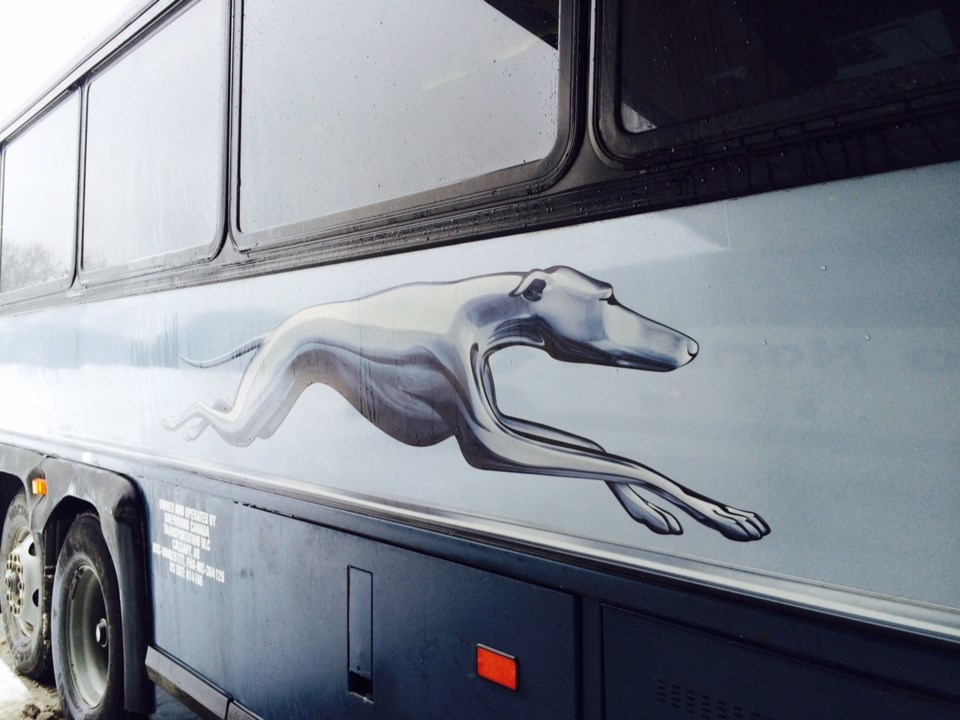Last week’s announcement that Greyhound was closing all Canadian operations was inevitable. Yes, it was kind of surprising when the word finally came down, but ever since Greyhound ended service in Western Canada in 2018 the end of service in the rest of the country was inevitable.
Greyhound, as a transit service, was a shell of its former self even before the pandemic. Like the zombies in Day of the Dead who start to vaguely remember what it was like to live as a human, Greyhound was only fit to operate in a world that does not exist anymore. Commuter culture had changed, but Greyhound had not.
Having said that, the service had a very central place for intercity transit service here in Guelph.
If you wanted a direct bus to downtown Toronto, or a direct bus to Kitchener, Greyhound has your carrier of choice. Yes, you can get to Kitchener on the GO Bus, but you have to detour through Aberfoyle and wait at the park ‘n’ ride. You can also take the GO Bus to Toronto, but you either have to transfer at Square One, or detour though Acton, Georgetown, Brampton, and Toronto airport in a two-hour tour.
This has been the elemental flaw in intercity transit service for some time, while the focus of local politicians has been on two-way, all-day GO Trains, any advocacy for building better bus transit between cities has suffered. You will likely be able to get a train to Toronto at any time of day before you can get on a bus and go to Cambridge.
As a matter of curiosity, I looked on Google Maps to see how long it would take to drive from the Guelph Transit stop closest to Cambridge, to the Grand River Transit stop in Cambridge closest to Guelph.
It’s a 10-minute drive.
That’s not exactly scientific, but it does paint a picture of how close our immediate neighbours are in the region, but without intercity transit, they’re so very far away indeed.
Meanwhile, there are two services that can take you between Guelph and Owen Sound. You can’t get direct bus line to Cambridge, Kitchener, Waterloo, Hamilton, London, Niagara Region or any point in between, but by God, they’ve made it easy to get to Owen Sound on public transit!
Of course, there are very specific reasons why we have good service to Owen Sound and no service to Cambridge; one service is a small private operator and the other’s a pilot program run by the City of Owen Sound with a Ministry of Transportation grant. So, these two buses are not so much the boon of smart planning so much as they’re the fruits of circumstance and opportunity.
We can not build regional transit this way. We just said goodbye to the last, great private transit operator, and we can’t fund transit the way we fund art installations and community engagement projects. It’s not sustainable.
But sustainability takes many forms, and long-term transit planning has not been the government’s strong suit lately. Years of engagement, environmental study, planning, and scheduling get thrown out on a whim and replaced by simple sloganeering or something that looks good on the back of an envelope.
There’s also a matter of attention. I’ve seen more advocacy on opening golf courses over the last four weeks than I’ve seen on establishing better intercity transit over the last four years. Regional transit inevitably comes up in the course of a campaign, but the day after Election Day we almost never hear about it again.
And what about proportionality? How many work hours at the cities of Guelph, Kitchener, Waterloo, and Cambridge, as well as the Government of Ontario, Metrolinx, and all the regional and local governments along the 401 corridor have been spent on two-way, all-day GO? Those logistics are massive, but what about the logistics of putting more buses on the road?
This is the rub. In the course of my journalistic work, I have repeatedly tried to ask the powers that be about what the proverbial roadblocks are. Why can’t we run a GO bus from Guelph Central Station to the Ainslie Street Terminal in Cambridge? I always hear that they’re studying the options, but they might has well just send me a shrug emoji.
But now there’s an elephant in the room, and its called COVID-19. I’d like to think that without the elephant, there might be some real urgency in addressing the loss of Greyhound, but my overly cynical mind doubts it.
Obviously, political leaders when asked about how we can address the absence of Greyhound in our intercity transit system can point to the elephant and note the serious lack of demand at present. But as of this writing, the University of Guelph and other regional post-secondary schools are planning on a complete return to in-person learning in the fall.
Do you know the method by which many thousands of university and college students traveled from home to school in the past? It rhymes with “bay sound”.
The day is coming that local and provincial leaders need to provide hard answers about regional transit. They have the time now, so let’s hope they’re using it wisely.
